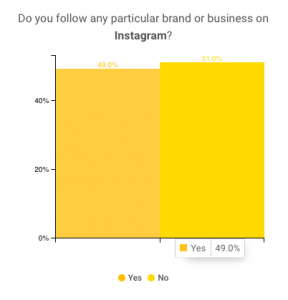As someone currently operates and provides aerial photography services, I have already come to understand who my target audience is. Whilst client gender is often varied, the initial point of contact tends t0 be a male averaging young-middle aged (30-60 roughly). Since drones as a general interest tend to be more popular amongst males and are therefore more likely to seek the service out directly. What I aim to learn from the sensis data is the specifics of how I should be marketing to my audience.
Of note is that my business is targeting commercial and retail sectors across Victoria as a means to stay open to Government projects.
I made a filter targeting Victorians who are active Instagram users, keeping it fairly broad to maintain data accuracy as well as a filter that simply monitors the behavior of males aged 30-65. Using these broad filters gives me a large range of data, and drawing conclusions from both together will ensure relevance and accuracy to my chosen field.
I determined that roughly 50% of all Instagram users in my target demographic follow brands on Instagram and a further 83% on Facebook. The reason why I’m targeting Instagram over Facebook then is practical than the statistics can show. Instagram is a creative platform, whereas Facebook is an information stream. Creative works such as cutting edge drone photography, in my personal experience of using both, gain far more leverage on Instagram simply because it’s eye candy, and Instagram is fundamentally a display platform for showing off your talents. Works such as mine are more likely to find their audience on Instagram, whereas people have to seek it on Facebook. So in this sense, 50% of all Instagram users in my target demographic following brands is a positive statistic.
Martin (2017, p. 53), while questioning Instagram’s ability to actively sell products, describes Instagram as king when it comes to ‘building brand awareness’, and that making photos ‘striking, memorable, and unusal’ will make people want to share your content. This is ideal for a media creator such as myself, in which building a digital portfolio is a vital step to developing brand trust amongst consumers. Critically, aerial photos in their very nature tend to be striking and circulate very well on Instagram, which I will elaborate on in a later post. For all of these reasons and more to come, Instagram is a fantastic channel for a creator such as myself to promote brand professionalism.
Whilst I already operate under a brand name, making a test account gives me the opportunity to experiment with naming strategies as informed by my knowledge of the target audience. In a discussion with Mark in week three regarding my line of work, he opened my eyes to the importance of brand naming I hadn’t previously considered. There is more to a brand name than simply sounding sophisticated. Mark opened up on his knowledge of drones and suggested that the word ‘drone’ be in the brand name rather than things like ‘aerial imaging’. The take away from this is that brand recognition is more important than sophistication, and that doing this will isolate my target audience and make them feel out of reach of my services.
For proof of concept, I conducted the following poll with people in my extended family, with each participant being between 30-60 years of age (6 males, 5 females). The poll simply asked them to identify which two keywords are more instantly recognisable as brand services:
. Drone Photography: 9 votes
. Aerial Photography: 2 votes
. Drone Imaging: 0 votes
. Aerial Imaging: 0 votes
These naming strategies extend beyond social media. For example, if I started up a brand website for people to contact me through, the poll suggests that they would be significantly more likely to find my website if ‘drone photography’ was used rather than ‘aerial photography’. This seems like an obvious naming choice then but it wasn’t something I was aware of until Mark pointed it out and I conducted this research, so I’m thankful for that.
Briefly expanding on my idea of splitting the task across assignments two and three, I have this week decided that assignment three will revolve around the establishment of my test business on Instagram as informed by my research in assessment two. I was planning to establish which content I was going to use/edit in this assignment but it seems like thats going to be too much and I should keep the media creation side of things for later to balance things out.
Reference:
Martin, Gail Z. 2017 The Essential Social Media Marketing Handbook : A New Roadmap for Maximizing Your Brand, Influence, and Credibility, Career Press, 2017. ProQuest Ebook Central, https://ebookcentral.proquest.com/lib/RMIT/detail.action?docID=4807028

